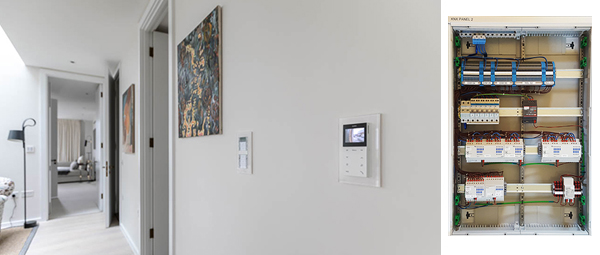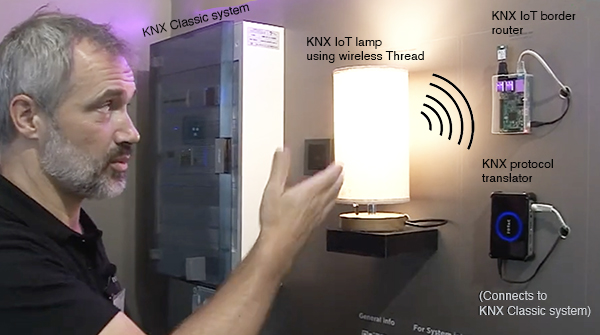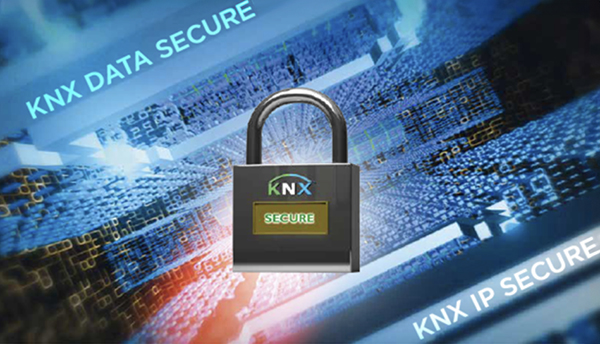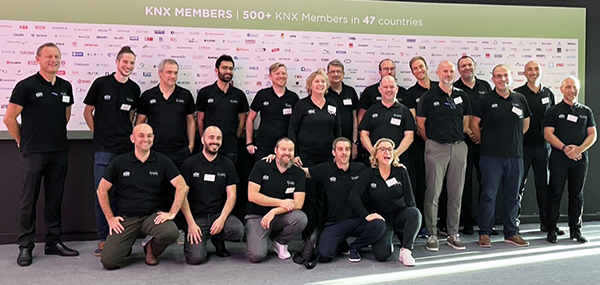
In Part 2 of this two-part series, Yasmin Hashmi looks at the KNX approach to reliability, security, the future and the KNX community.
In Part 1, I explained to the lay person what KNX is and what it does. I also outlined two of its core values, namely interoperability and backwards compatibility, both of which ensure that the customer can choose the best products for the job, is never abandoned and is never reliant on one provider of products or services. In Part 2, I look at the other core values of KNX and why it is a brand that can be trusted to lead us into the future.
A KNX installation comprises hardware devices and a software program. The hardware can be mixed and matched from a wide choice of companies and comprises some which is end-user-facing, such as beautiful touchpanels and switches (many of which have built-in thermostats), sensors, presence detectors, tablets etc, and some which doesn’t need to be seen and is typically hidden away in an equipment rack in a cupboard or plant room.

All of these devices are connected to each other and communicate in a standardised way, that standard being KNX. The system is programmed by the KNX-certified professional using the special ETS programming software from KNX, and the program resides in every KNX device connected to the installation.
Robust and reliable
From the outset, KNX Association developed a simple and reliable way of connecting KNX devices to each other, using twisted pair (TP) cable. Further, it designed KNX to be a distributed system, meaning that there is no central ‘brain’ to go wrong and bring the whole system down. The brains are in all of the devices, so if one fails, the show goes on.

Failure is very rare because a backbone of reliability runs through all KNX products, of which there are now over 8000 different types – all rigorously put through their paces in independent test labs before being certified as KNX compliant. I’ve heard of installations that are over thirty years old, still going strong, with no failures. For those responsible for specifying and installing KNX systems, KNX Association offers online and in-person training and certification in centres on every continent. Indeed there are now over 103,000 trained ‘KNX Partners’ to choose from worldwide, and the number is only growing.

Forward looking
Another core value of KNX is to continually develop as a state-of-the-art ecosystem. The way KNX devices can be connected to each other has greatly expanded. It now includes wireless in the form of KNX RF, so KNX devices can be easily retrofitted or installed in places where TP cable is impractical; and KNX IP/net that uses Ethernet connections. For wider connection using the latest IPv6 networks (wireless, LAN and Thread), a new generation of KNX IoT devices is being developed thanks to the new communication medium called KNX IoT Point API, which is leading the industry.

Indeed the design and control of modern buildings now requires an increasing number of disparate systems to be networked and share vast amounts of data, so the meaning of that data has to be standardised and non-manufacturer-specific. This is called semantics, and is included in another development of KNX, namely the KNX IoT 3rd Party interface. This allows non-KNX third parties to tap into the data of KNX installations and vice versa.

Together, KNX IoT Point API and KNX IoT 3rd Party interface give unprecedented IT-friendly access to the myriad existing KNX installations around the globe, opening up a world of potential cloud-based services to these installations. It also means that KNX will be key to improving the planning stage of buildings, easing the configuration of products and becoming the best data provider for BIM (Building Information Modelling) – a process for creating and managing information on a construction project throughout its life cycle.

Secure
KNX Association has always taken the security of its systems very seriously, and as KNX reaches out further, the risk of hackers trying to gain access obviously increases. To foil such attempts, KNX Association has developed KNX Secure, an ISO standard that uses world-class encryption and comprises two solutions: KNX Data Secure for securing data within a KNX installation; and KNX IP Secure for securing systems networked to the wider world.

The human touch
So far, I’ve talked mostly about the practical side of KNX, but there is also the human side. KNX Association does a lot to nurture and support its staff and its global community. It encourages and promotes national groups and user clubs, it has a Scientific Partner programme for information exchange between universities, technical institutes and research bodies, and it attends numerous trade shows and exhibitions worldwide. This includes the biennial Light + Building show in Frankfurt, where its presence is massive, and where it provides many opportunities for the global KNX community to come together, learn, network, share ideas and have fun. It also promotes KNX projects, hosts the annual KNXperience show and the prestigious biennial KNX Awards ceremony. In addition, it provides a wealth of freely-available online presentations and technical sessions, and it is now helping its members and partners by marketing KNX to the end-user.

Conclusion
Ever since its inception, the core values behind KNX included giving the market choice by allowing electrical devices from different manufacturers to communicate with each other using a standardised, future proof, robust and reliable system that is flexible, backwardly-compatible and open to future expansion. Combine this with engineering excellence, beautiful design and the positive way in which the technology can be used to help individuals, organisations and, ultimately, the planet, and it’s no surprise that everyone involved with KNX is so enthusiastic about it, and that it wins prestigious awards including the recent Frost & Sullivan 2023 Global Technology Innovation Leadership Award.
Global. Secure. Connected. KNX has proven that it is a brand with values you can trust.
Yasmin Hashmi is the Editor of KNXtoday magazine.












